When you come in for your hygiene appointment at least every six months and find out you are due for your annual x-rays and exam, one of the many things Dr. Holloway will be looking for are signs of decay or a cavity. You may hear her say, “Your enamel is starting to ‘demineralize,’ or break down, and that we need to watch that area.”
So, what does that mean?
The process of enamel demineralization starts to occur when the pH in your mouth drops below 5.5. The biggest factor that affects oral pH is the type of food you eat. Some foods stick to your teeth a lot easier and longer than others, and sometimes its just the frequency of eating that can create a constant acidic environment. Individual characteristics of our saliva, the plaque microbial composition and even the differences in our tooth structure are also factors that directly affect the acidity in our mouths.
Assessing Your Risks for Tooth Decay
Decay is a disease. According to The United States Centers for Disease Control and Prevention (CDC), almost half of our nation’s kids between the ages of 2 to 19 have experienced decay. Between 90-96% of adults have tooth decay reported. And the older we get, the more prone we are to having decay. We will discuss products that our team at Floss Dental Boutique recommend, how to slow the progress of demineralization, and why products like fluoride are so highly recommended at your hygiene appointments.
To assess your risk for tooth decay, you should honestly answer a few simple questions:
- How often are you brushing and flossing/water-piking?
- How often to do you come in for your hygiene appointments?
- How much sugar or fermentable carbohydrates do you eat?
- Do you snack on these foods all day or just a quick bite/drink?
These questions will help you determine your risk for decay, but the biggest thing to remember is a cavity does not develop unless sugar is present!
How to Prevent Demineralization and Tooth Decay
Our enamel is the hardest, most mineralized structure in our body. Enamel is made up of hydroxyapatite crystals composed mostly of calcium and phosphate. The enamel becomes weak when the pH drops below 5.5, allowing the calcium and phosphate to be dissolved from the tooth structure. This is where the term “demineralization” comes from. Enamel cannot repair itself! Remineralization needs to take place by adding lost calcium and phosphate, fluoride, and or xylitol.
Fluoride can be very beneficial because it creates an entirely new structure called fluorohydroxyapatite, which is much stronger and more resistant to decay than the original structure hydroxyapaptite. Water fluoridation would typically be the ideal delivery of fluoride to help protect our teeth, but does not occur in Washoe County, so we need to incorporate topical fluoride. Dr. Holloway, your Floss hygienists, the American Dental Association, and American Dental Hygiene Association all recommend a fluoride treatment every 3-6 months to help protect and remineralize.

As mentioned before, salivary pH is a critical component to the process of decay. There are certain types of bacteria that thrive in acidic environments. When exposed to fermentable carbs (sweets like cake and donuts; bananas, some tropical fruit, raisins and dried fruit; and starchy foods), they can force our pH to drop even lower. Now, we all have bacteria in our mouths, both good and bad bacteria, but managing them is crucial to preventing demineralization.
Strong evidence supports that using xylitol, a natural antibacterial sugar-alcohol, can help increase the oral pH. It can be found naturally in fruits such as raspberries, strawberries, plums, and some vegetables like pumpkin, spinach and cauliflower. We often find it in many dental products such as rinses, gums, varnishes and toothpaste because it reduces the bacteria’s ability to attach to the tooth surface, and also disrupts bacterial metabolism that leads to cell death. At Floss, we have a product line called CarieFree that uses xylitol in a chewing gum, oral moisturizing spray, mouth rinse, and gel. All help to neutralize the pH and prevent demineralization.
Our goal at Floss Dental Boutique is to keep your mouth healthy and cavity free. We love seeing you walk through the door with a happy, healthy smile, and are always here to answer any questions you may have.





